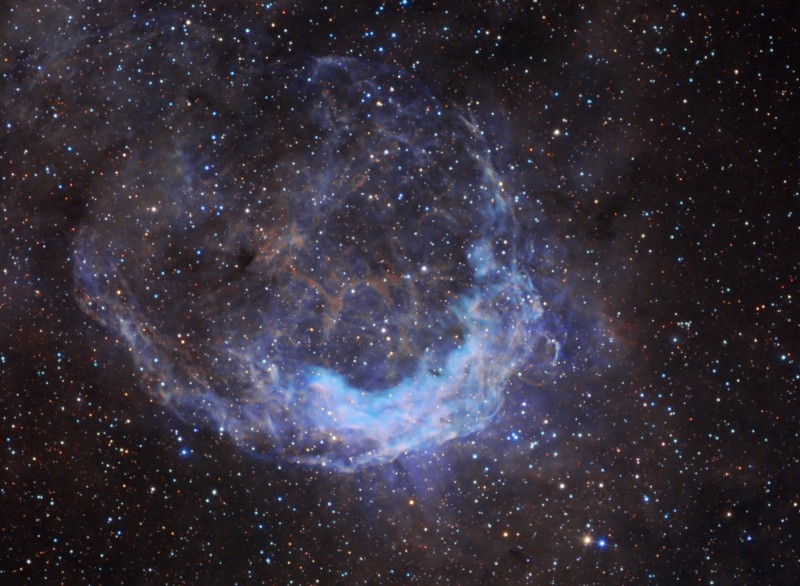Explanation: NGC 3199 lies about 12,000 light-years away, a glowing cosmic cloud in the southern constellation of Carina. The nebula is about 75 light-years across in this haunting, false-color view. Though the deep image reveals a more or less complete ring shape, it does look very lopsided with a much brighter edge at the lower right. Near the center of the ring is a Wolf-Rayet star, a massive, hot, short-lived star that generates an intense stellar wind. In fact, Wolf-Rayet stars are known to create nebulae with interesting shapes as their powerful winds sweep up surrounding interstellar material. In this case, the bright edge was thought to indicate a bow shock produced as the star plowed through a uniform medium, like a boat through water. But measurements have shown the star is not really moving directly toward the bright edge. So a more likely explanation is that the material surrounding the star is not uniform, but clumped and denser near the bright edge of windblown NGC 3199.
1999 2000 2001 2002 2003 2004 2005 2006 2007 2008 |
Январь Февраль Март Апрель Май Июнь Июль Август Сентябрь Октябрь Ноябрь Декабрь |
NASA Web Site Statements, Warnings, and Disclaimers
NASA Official: Jay Norris. Specific rights apply.
A service of: LHEA at NASA / GSFC
& Michigan Tech. U.
|
Публикации с ключевыми словами:
Wolf-Rayet star - stellar wind - звезды Вольфа-Райе - звездный ветер
Публикации со словами: Wolf-Rayet star - stellar wind - звезды Вольфа-Райе - звездный ветер | |
См. также:
Все публикации на ту же тему >> | |
